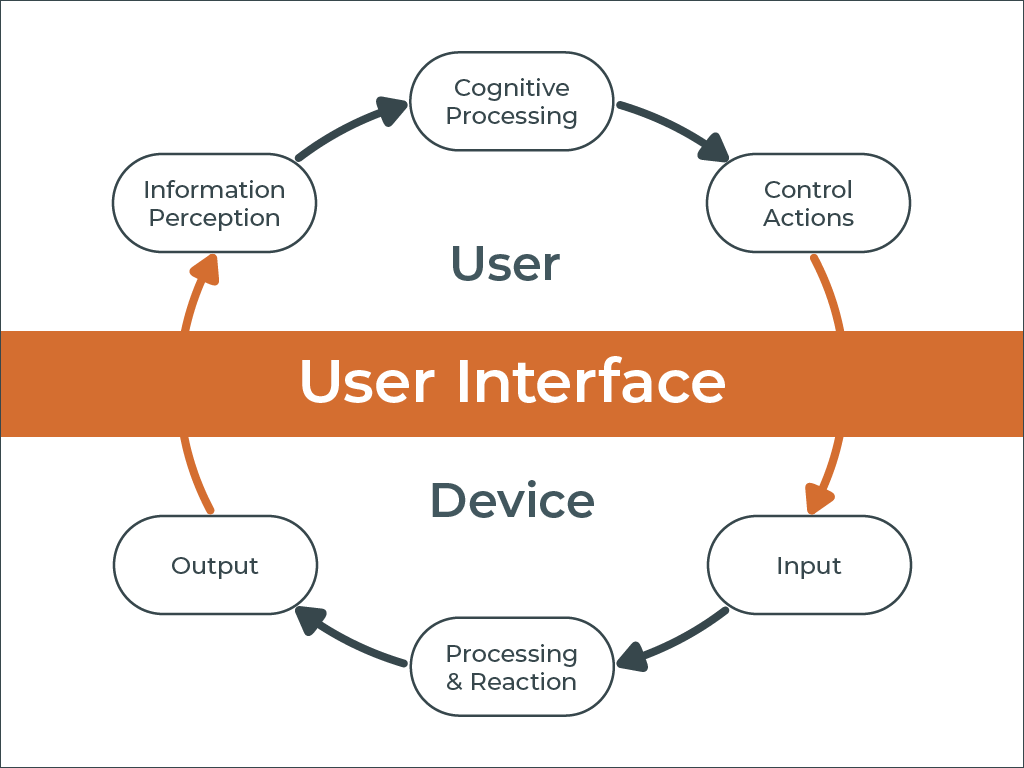Human Factors Engineering is an interdisciplinary field that focuses on optimizing the design of products, systems, and environments by studying how people interact with them (Branaghan et al., 2020). As part of that undertaking, human factors researchers have developed several models for simplifying how human beings interact with the world. One is PCA.
The Perception-Cognition-Action Model
Seasoned healthcare human factors researchers are likely familiar with the “PCA model,” which the FDA references in their “Applying Human Factors to Medical Devices” guidance document (FDA, 2016). PCA stands for perception, cognition, and action and is a fantastic tool for identifying why errors occur during usability testing.

Slightly expanding your perspective, however, will reveal that PCA is not only a means of assessing use errors but also a system fundamental to the relationship between human beings and everything we encounter.
Let’s break it down a little bit:
1. Perception is what we notice, it is the awareness of the input received from our senses. It’s what’s happening if you identify the smell of smoke in a hotel lobby or hear beeping while the back of the truck in front of you appears to be getting closer.

2. Cognition is what we understand, it includes attention, memory, reasoning, problem-solving, and decision-making. Cognition enables us to process the sensory input we perceive and is how we (hopefully) know something in the hotel is burning and that the truck is backing up.
3. Action is what we do, it is the response (physical or behavioral) to a perceived stimulus and involves the planning, execution, and control of voluntary movements. Action is swiftly leaving the hotel or quickly swerving around the truck to safety.
In simple terms, “perception” informs us of what’s going on, “cognition” processes that information and we respond with “action.” This is true regardless of the product, system, or environment we interact with.
PCA for Human Factors Design
When designing a product, specifically a medical device, PCA can be an effective guide (Wiklund et al., 2016). It might be instinctive to start by considering the action you want people to take with your product. Designers almost certainly consider how they intend for their product to be used early in development, but not necessarily how they intend users of the product to determine its function let alone become aware of its capabilities and features.
Suppose you’re a medical device manufacturer developing an injector pen that requires pressing a button to deliver medication.

When people interact with your device:
- Action is performing the injection. This is likely your reason for developing the product and the product’s intended use.
- Cognition is understanding that the injection is triggered by pressing a button. Users of the device that you’re developing will not intrinsically know that a button must be pressed for it to work, that information needs to be communicated through the device’s interface (i.e., the device’s physical shape and the materials it comes with such as packaging and instructions).
- Perception is noticing the button. Before a user can even think about pressing a button they need to know it exists, and how they notice it is largely a function of its design. Is the button distinguishable from the rest of the device, for example, does it have a different color or texture than its surrounding components? Is it clearly labeled in the device’s accompanying materials?
As a designer, you would want to make sure not only that the button is easy to press (action), but that it has a clear purpose and function (cognition), and it is easy to find (perception). The PCA method can help product developers expand their focus to the bigger picture.
PCA for Human Factors Research
If that same injection device were being evaluated during a human factors usability study and a participant did not press the button while attempting to perform an injection, a human factors researcher would therefore be inclined to ask investigational questions such as
- Did you notice that the device has a button? (Perception)
- What did you think the button was for? (Cognition)
- Were you able to press the button? (Action)
Whether you’re developing or evaluating a product, system, or environment, PCA is a tool for breaking up the interactions human beings have with the world into 3 manageable stages.
Contact us to learn more about designing and evaluating products with a keen eye for perceptive error and how we can assist with your human factors needs.
References
Branaghan, R. J., Hildebrand, E. A., & Foster, L. B. (2020). Designing for medical device safety. In Sethumadhavan, A. & Sasangohar, F. (Eds.), Design for Health: Applications of Human Factors (pp. 3-29). Academic Press.
Food and Drug Administration. (2022). Content of Human Factors Information in Medical Device Marketing Submissions: Draft Guidance for Industry and Food and Drug Administration Staff. https://www.fda.gov/media/163694/download.
Wiklund, M., Dwyer, A., & Davis, E. (2016). Medical device use error: Root cause analysis. CRC Press.




